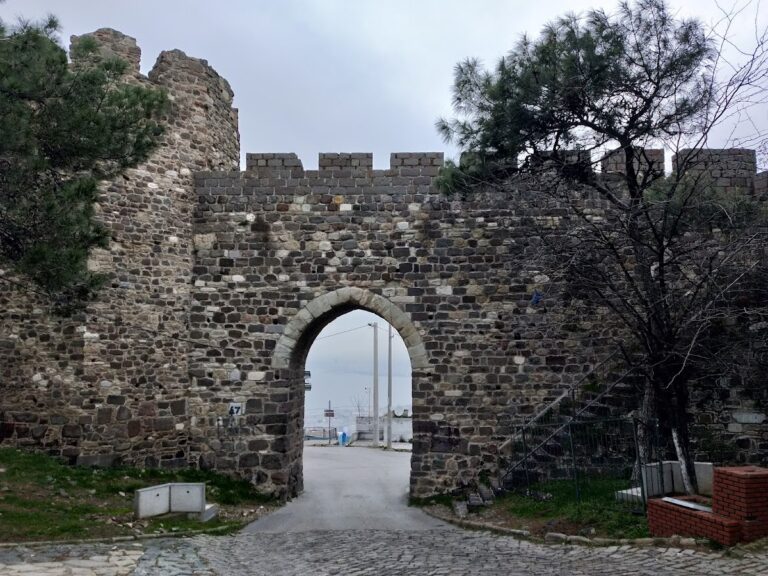Çeşme Castle: An Ottoman Coastal Fortress in Turkey
Visitor Information
Google Rating: 4.6
Popularity: High
Google Maps: View on Google Maps
Country: Turkey
Civilization: Unclassified
Remains: Military
History
Çeşme Castle is situated in the town of Çeşme, Turkey, and was constructed by the Ottoman Empire in the early 16th century. Its establishment responded directly to the region’s strategic importance along the Aegean coastline.
The fortress was built in 1508 under the orders of Sultan Bayezid II following two Venetian raids on the town in 1472 and 1501. These attacks highlighted the vulnerability of the coastline, prompting the Ottoman administration to fortify the harbor effectively against future naval threats. The first known commander appointed to oversee the castle’s defenses was Mir Haydar, who also held the governorship of the surrounding Aydın province. The castle thus became central to Ottoman military control and coastal protection during this period.
In 1770, the castle witnessed a significant historical event when the Battle of Çeşme unfolded in the harbor just beneath its walls. This naval conflict involved the Ottoman and Russian fleets during the Russo-Turkish War and marked a crucial moment in the military history of the region. The fortress itself continued to serve defensive purposes well into the 19th century, after which it gradually ceased its military function and was largely abandoned.
In the 20th century, the castle found renewed significance as a cultural and historical site. In 1965, it opened as a weapons museum, notably displaying arms on loan from the Topkapı Palace Museum in Istanbul. Later, in 1984, it was converted into the Çeşme Archaeological Museum. This cultural transformation allowed the display of artifacts unearthed from local ancient settlements, such as Bağcılar, and the ancient city known as Çeşme-Erythrai. The exhibits include various amphorae and trade-related objects alongside items connected to the Russo-Turkish War. More recently, in 2020, Çeşme Castle was nominated for inclusion on Turkey’s UNESCO World Heritage Tentative List.
Today, the site remains significant as a cultural landmark, with a monument dedicated to Gazi Hasan Pasha, an important Ottoman naval figure, prominently placed in front of the castle.
Remains
Çeşme Castle is built with a rectangular plan that strategically faces the harbor, designed primarily for coastal defense. Its structure includes six bastions positioned along three sides, each intended to strengthen the fortress’s ability to repel naval attacks. Surrounding the castle on three sides are moats, a traditional defensive feature allowing additional protection and separation from the surrounding land.
Two notable features of the castle are the twin towers closest to the sea, which show architectural similarities to the northwestern tower of the Genoese castle on the nearby island of Chios. This resemblance suggests shared influences or tactical designs across Aegean coastal fortifications. Originally, the castle stood directly on the shoreline, serving as the first line of defense for the harbor. However, natural changes over the centuries, including the retreat of the sea and human land reclamation efforts, have caused the fortress to become situated further inland than when it was first built.
The materials used for the fortress reflect typical Ottoman military construction of its era, focusing on sturdy stonework to withstand both artillery and naval bombardment. Over time, the castle has been well preserved and now accommodates the Çeşme Museum within its walls.
Inside the museum, visitors can observe a collection of archaeological finds recovered from nearby ancient sites, including amphorae—large ceramic vessels used in antiquity for transporting goods such as wine and oil—and other trade-related artifacts. Additionally, the museum displays various weapons and items connected to historical conflicts in the area, illustrating the castle’s longstanding military significance.
In front of the castle stands a monument dedicated to Gazi Hasan Pasha, commemorating his naval role, which ties into the broader military history embodied by the fortress. Together, these architectural and archaeological elements provide a well-documented snapshot of the castle’s multifaceted role as a coastal stronghold and a custodian of regional heritage.







